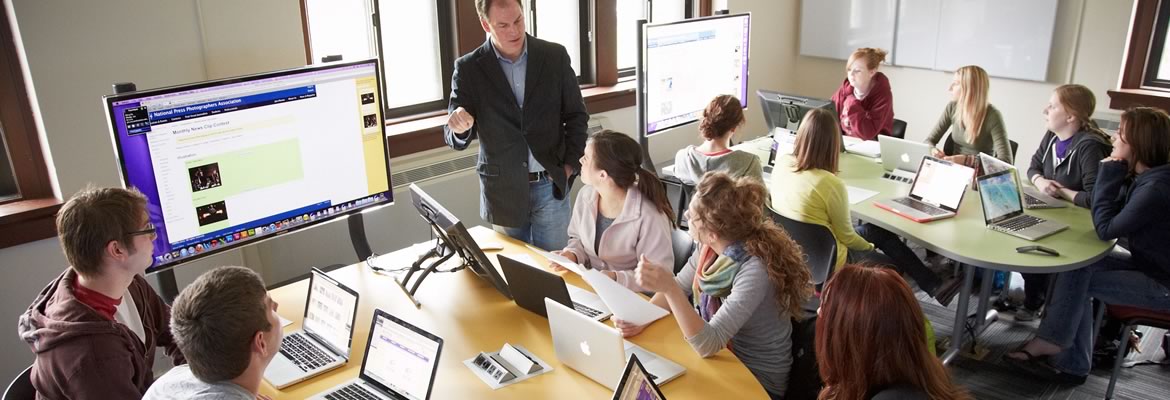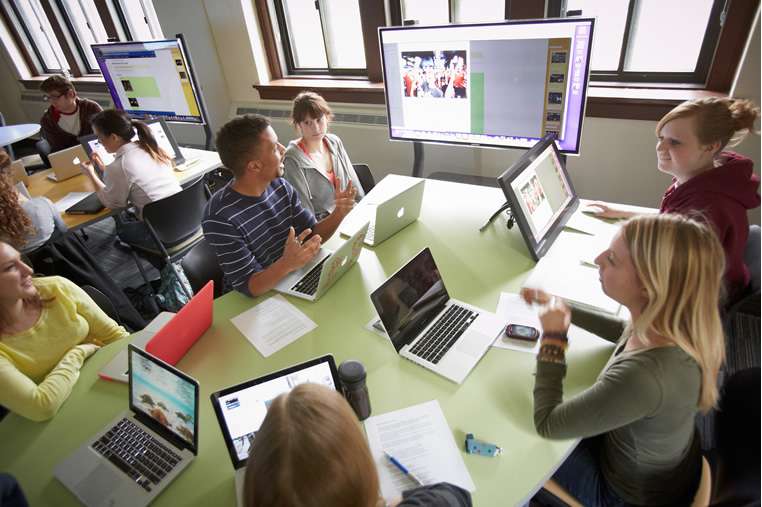Group Work Leads to Better Learning
ClassSpot PBL connects each team’s shared big screen to the teaching wall screens. Faculty can distribute assignments to individual teams, or to all teams, with a simple drag-and-drop gesture. Any group, or individual student, can share results to the front screens, and then students from other teams can correct errors or make other changes directly — from their own seats.


